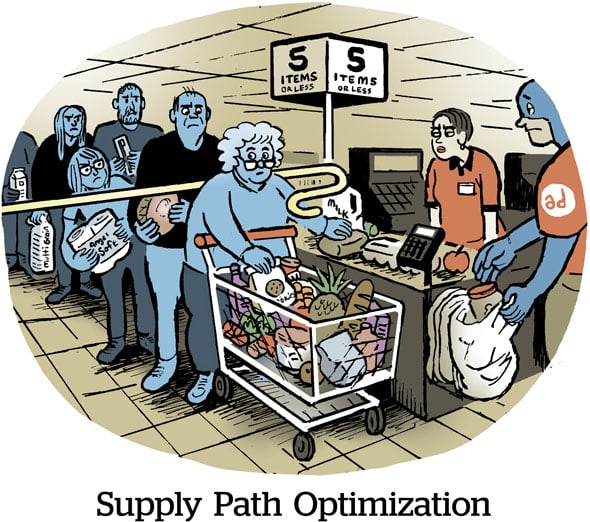The Trade Desk has closed the spigot on a deluge of video inventory it says is mislabeled by Yahoo as in-stream ad units.
As of Monday this week, The Trade Desk (TTD) has already disabled access to all of Yahoo’s video inventory for open-auction bidding, according to an agency source that asked to remain anonymous.
TTD had threatened to do so, as Adweek reported a week ago.
TTD confirmed to AdExchanger that it had removed support for at least some of the online video inventory sold by Yahoo as a publisher.
However, a company spokesperson declined to offer more specifics about the scope of the shutdown, citing the fact that many people with knowledge of the situation are currently traveling back from the Cannes Lions event in France.
“We continue to work with our publishing partners to adhere to industry standards,” TTD’s spokesperson said. “After informing clients we would be blocking incorrectly declared inventory, we have been working with Yahoo and expect resolution soon.”
Deadline disagreements
TTD previously said it would demonetize Yahoo’s video inventory across all open market and library deals by June 17 if Yahoo didn’t take steps to accurately label inventory within its platform. And it seems TTD is holding that line in the sand.
TTD added, according to earlier reports, that it would extend the ban to include all Yahoo video inventory included in private marketplace deals if Yahoo did not correct its labeling practices by July.
Yahoo confirmed it is collaborating with TTD on a solution. But it was less charitable in describing the DSP’s motivations and the timing of the deadlines imposed on Yahoo.
“The timing of this deadline, coinciding with the kickoff and wrap-up of Cannes, appears to be an arbitrary and publicity-seeking effort by The Trade Desk at Yahoo’s expense, especially given the incredibly low amount of revenue this represents for both companies,” said Erin Miller, VP of corporate communications at Yahoo, in a statement.
“We are still in negotiations and intend to make business decisions on a timeline that allows us to do what’s right for our clients, partners and business,” she wrote. “In addition, we are aware that TTD turned off open market spend, but we have not seen a change in spend from advertisers this week.”
What’s instream, anyway?
TTD claims Yahoo, in its capacity as a publisher, consistently mislabels its video inventory as instream and has failed to rectify this misclassification.
It isn’t an entirely new problem. The disagreement over how Yahoo classifies its video formats is the latest example of wider disagreements between buyers and sellers over what constitutes “instream” video and what distinguishes it from less desirable “outstream” placements.
Last March, the IAB Tech Lab published new standards for classifying instream video. As a general rule, these standards define instream video as content the user arrives on the page expecting to watch, with the user having selected it to play and the video playing with sound on by default. Industry experts tend to describe this type of video experience as “YouTube-like.”
In contrast, what most buyers would consider “outstream” now falls into one of three buckets defined by the IAB Tech Lab: accompanying content, interstitial or no content/standalone.
Publishers are incentivized to mislabel inventory as instream because those placements attract much higher CPMs than outstream units. In reality, that so-called instream video ad might monetize a video that autoplays on the page but may or may not be related to the on-page content. Nobody came to the URL to watch that video.
According to the anonymous agency source that spoke to AdExchanger, fewer than 1% of online video ad impressions sold by Yahoo as a publisher played with the sound on. That would mean nearly all of Yahoo’s video inventory would not adhere to the IAB Tech Lab’s new definition of instream.
Both TTD and Yahoo have confirmed in prior media reports that they’re working on fixing the misclassification issue. But neither company has provided clarity on what changes need to be made, the timeline for implementing those changes or when access to Yahoo’s inventory will be restored in TTD’s platform.
AdExchanger will update this story as more information becomes available.


















